This chow mein noodles recipe is the healthier and BETTER version of take-out, made with minimal oil in less than 20 minutes! Chewy, glossy noodles, veggies and aromatics are stir fried in one skillet then lightly coated in the dynamically flavorful, sweet, savory, umami rich sauce. These chow mein noodles are ideal for busy weeknights, highly customizable, and will have the entire family slurping bowl after bowl!
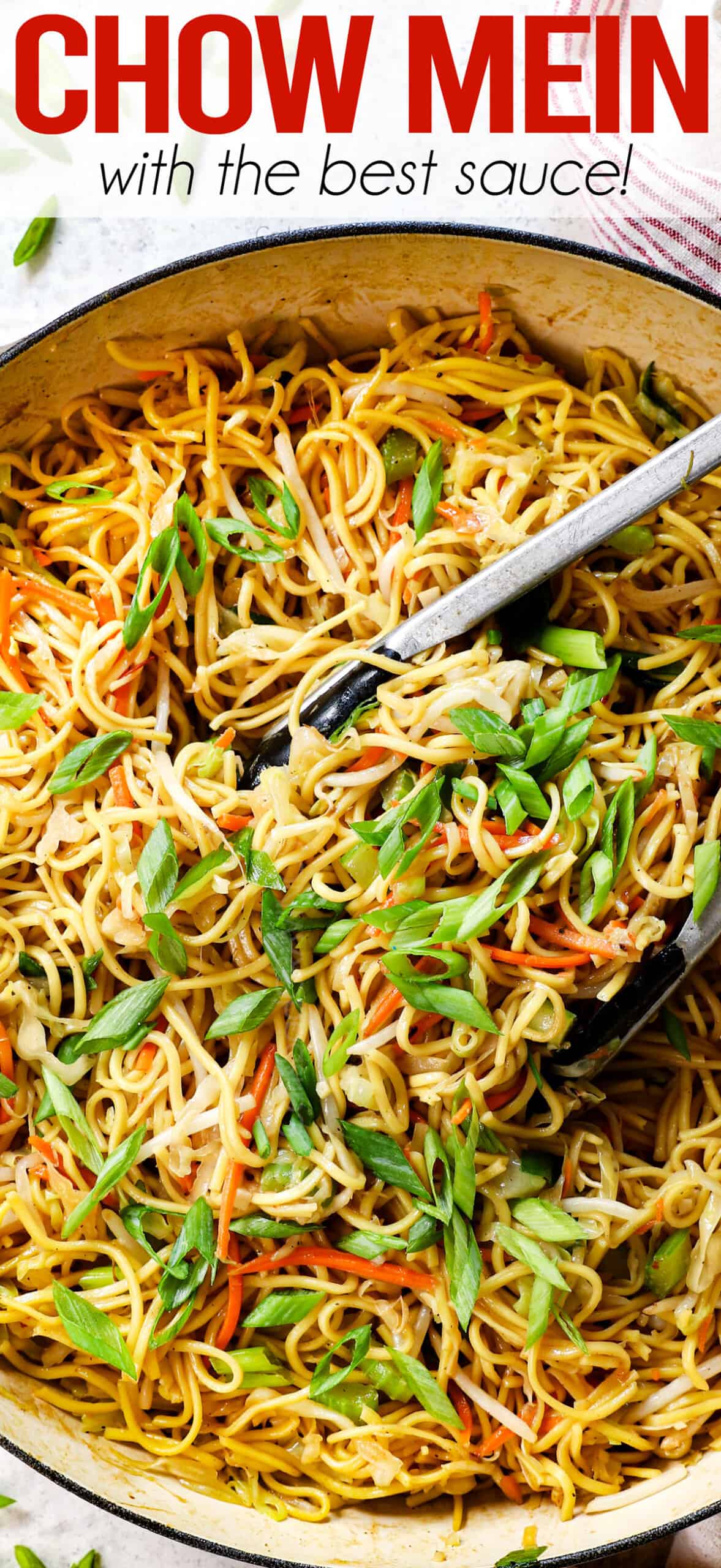
Watch How to Make Chow Mein

The Best Chow Mein Noodles Recipe


What is Chow Mein?
The term “Chow Mein” is derived from the Mandarin term “chǎomiàn,” meaning “fried noodles.” Chow Mein is true to its name, featuring a delightful combination of thin, curly, pre-fried, wheat flour-egg noodles. The noodles are either pan fried until crispy (crispy chow mein), or like this recipe, boiled to chewy perfection, then stir fried with vegetables (namely cabbage, carrots, and sprouts), and tossed in a light sauce (soft chow mein).

Chow Mein vs Lo Mein
Chow mein and lo mein are distinct Chinese noodle dishes each made with wheat flour egg noodles. However, chow mein begins with pre-fried noodles that are either pan fried or boiled, then stir-fried. Lo mein noodles, on the other hand, are usually fresh, thicker, smoother, and chewier. Chow mein is a drier dish with minimal sauce, while lo mein is saucy.
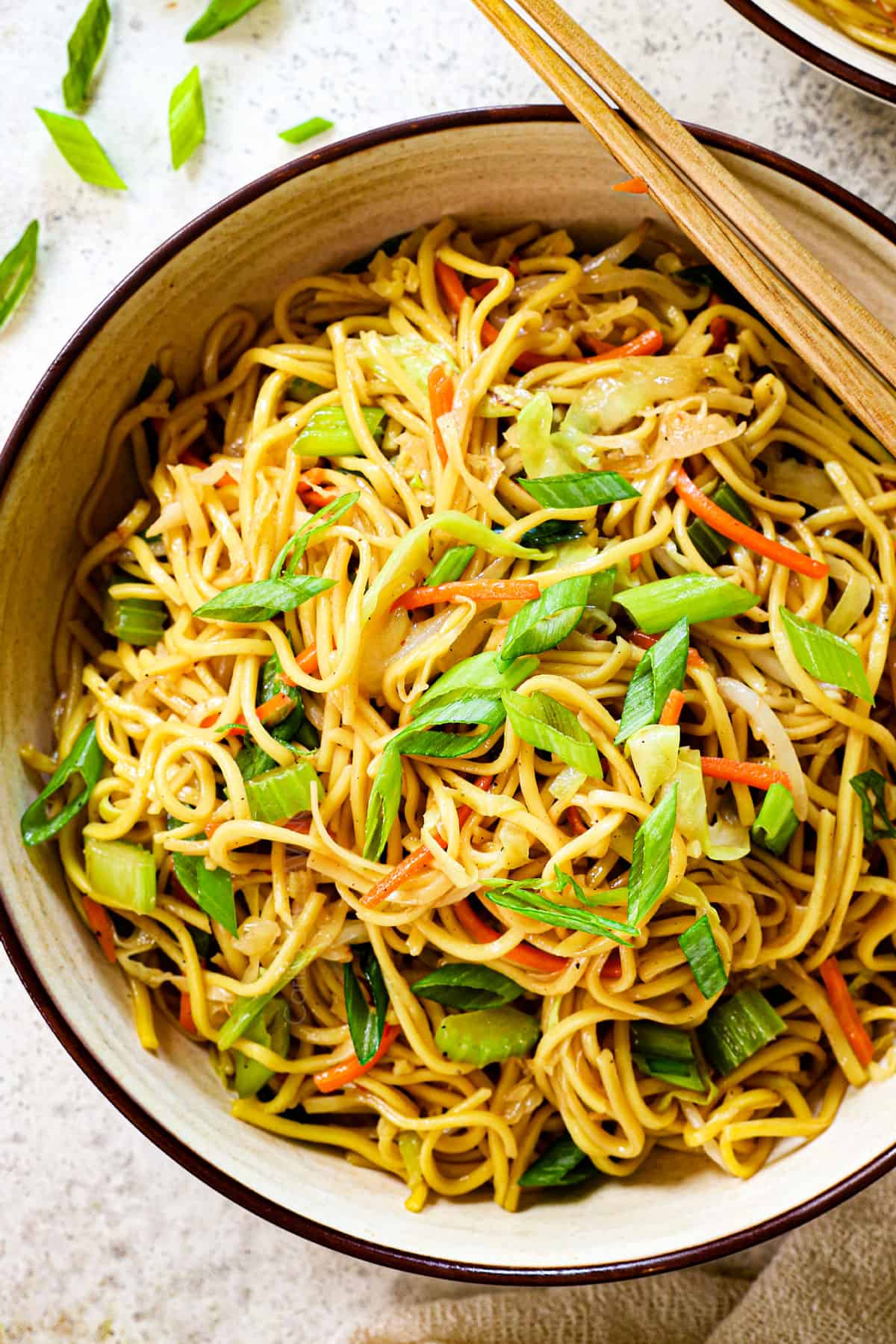

Chow Mein Ingredients
This chow mein recipe appears to have a lot of ingredients, but they are just dumped into the sauce or stir fry – easy peasy! Let’s take a closer look at what you’ll need (full recipe in the printable recipe card at the bottom of the post):
for the stir fry:

What noodles are best for Homemade Chow Mein?
Look for dried chow mein noodles in the Asian aisle of your grocery store or I purchase my noodles on Amazon (these are the ones I use). Each package typically is 6 ounces, you will use 12 ounces for this recipe. Remember to follow the cooking instructions on the packaging to ensure they’re cooked to the desired texture before incorporating them into the homemade chow mein recipe.

For the Sauce


What if I’m vegetarian or allergic to shellfish?
If you’re allergic to shellfish or vegetarian, use LEE KUM KEE Vegetarian Stir-Fry Sauce instead of oyster sauce. You may also use soy sauce in a bind – just don’t expect as spectacular of results


How to make Chow Mein
Chow mein is quick and easy to make at home in these few steps (full recipe in the printable recipe card at the bottom of the post):


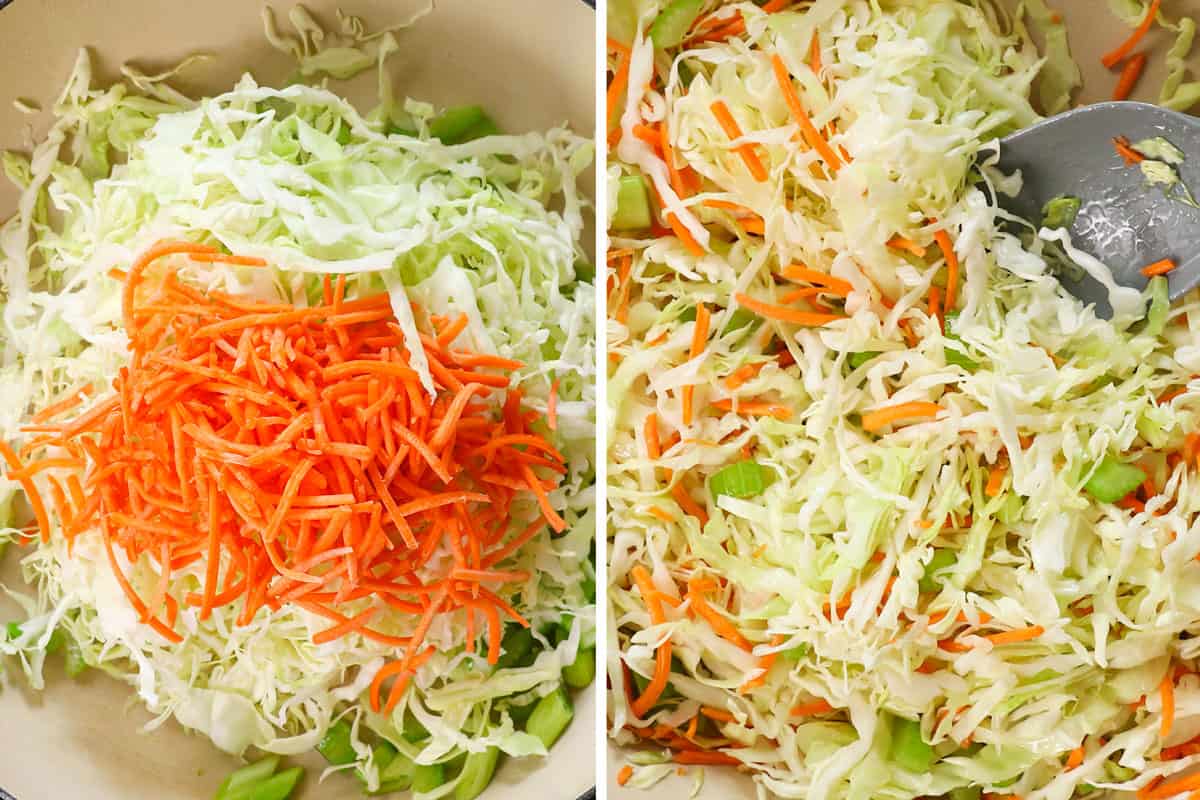
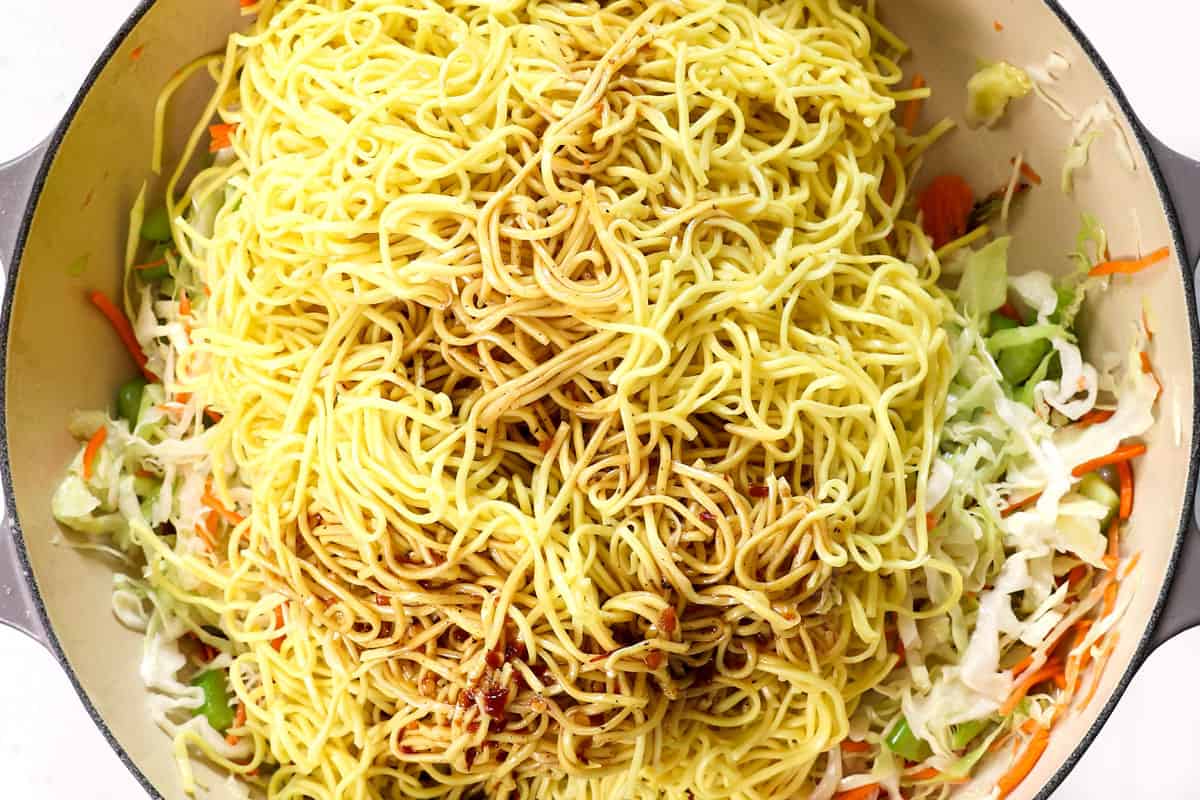
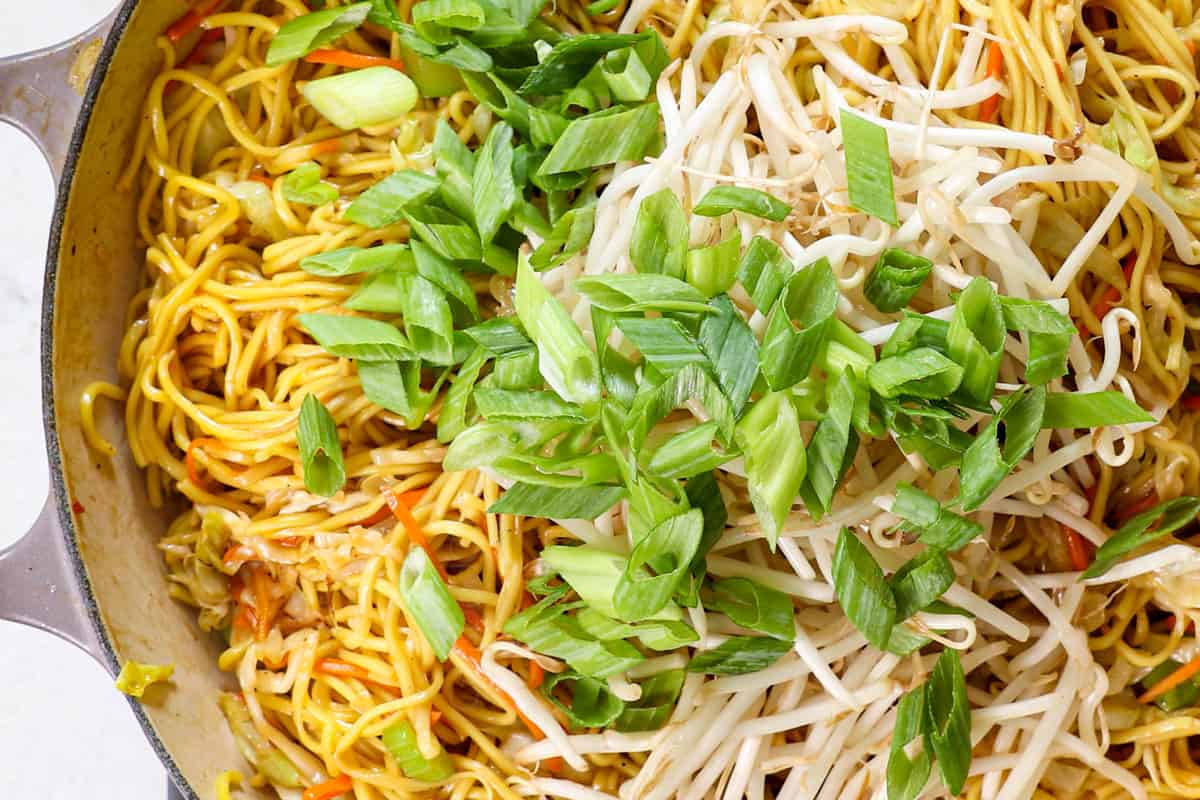
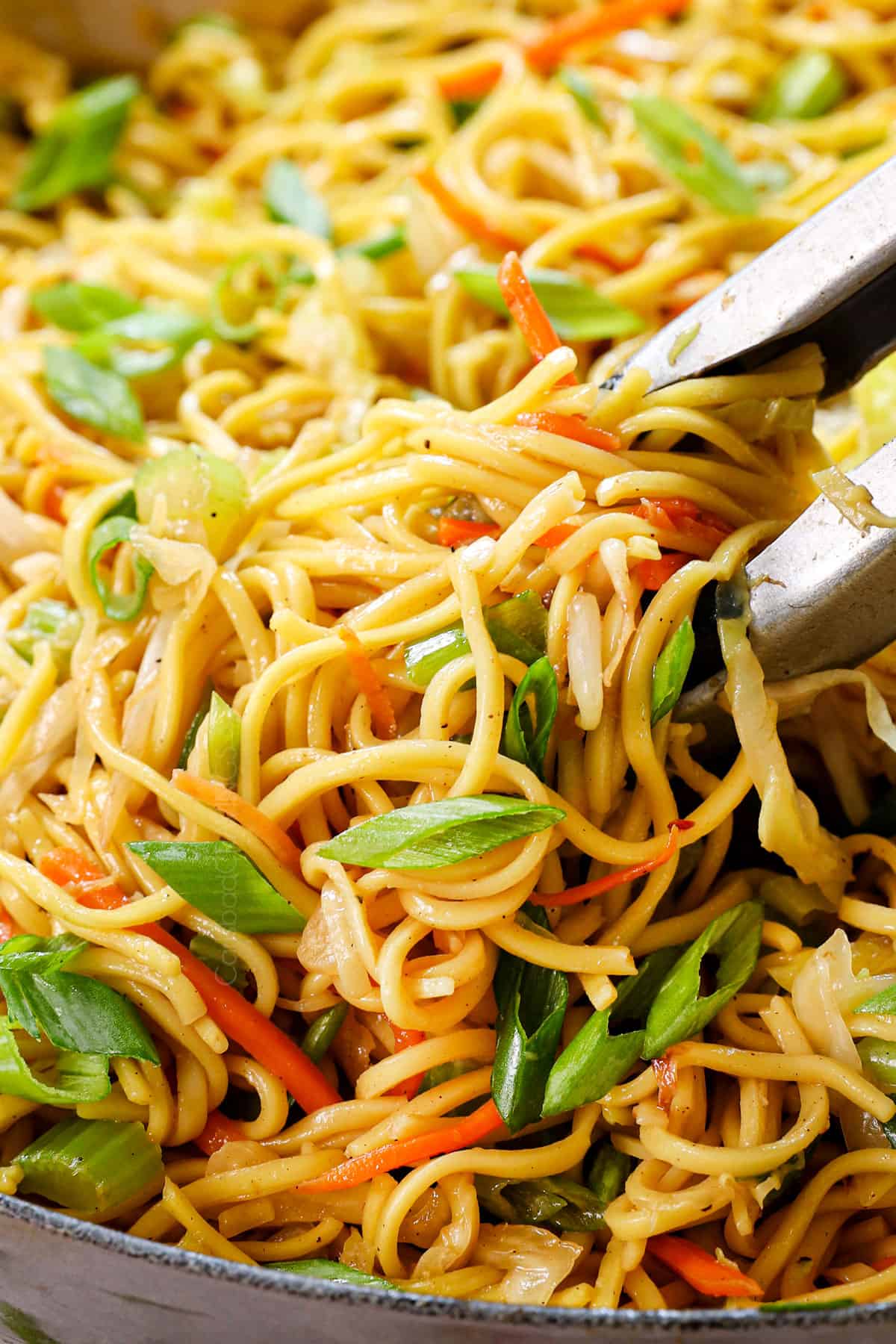

Tips for cooking Chow Mein Noodles
Follow these tips for the best homemade chow mein recipe!
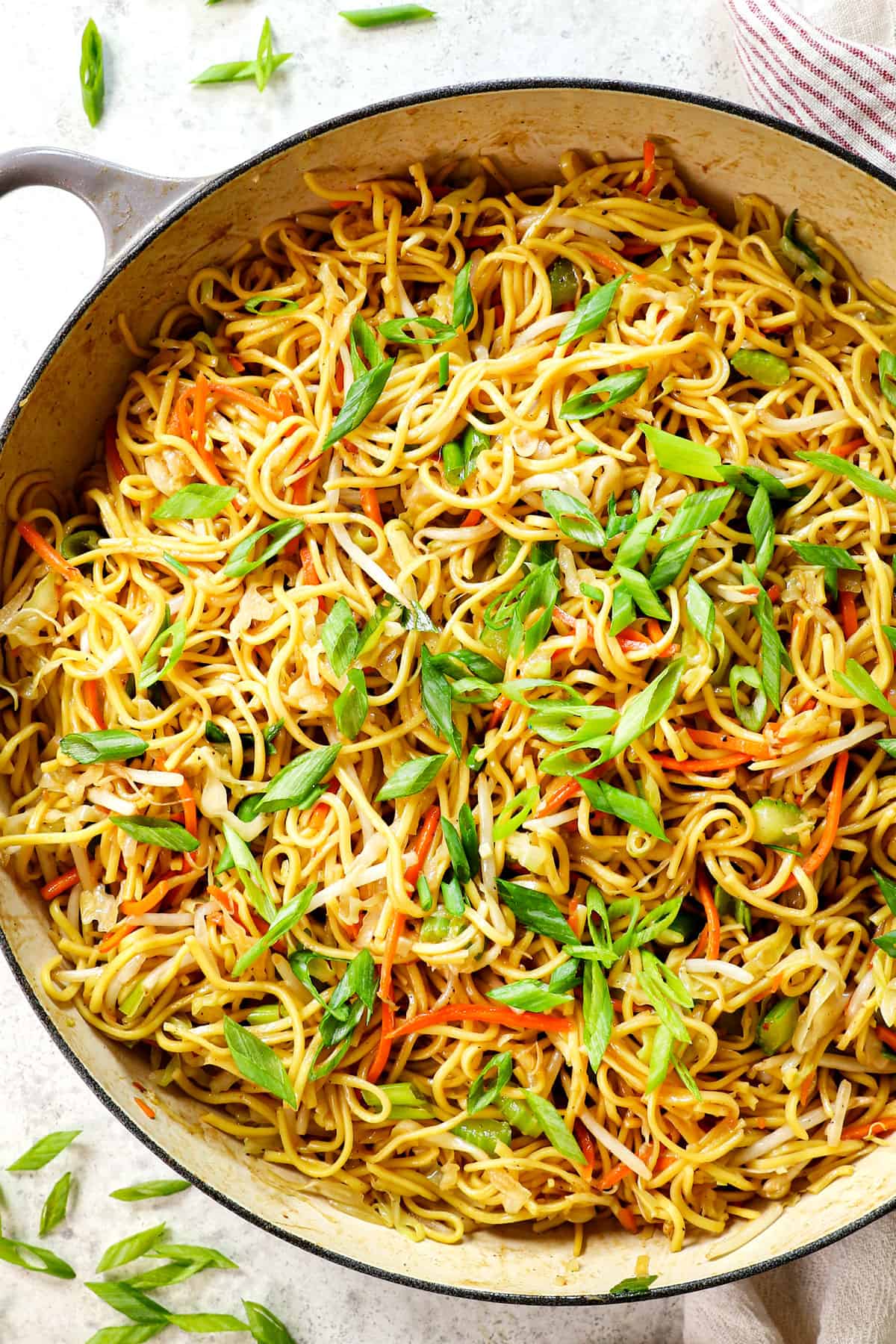

Chow Mein Recipe variations
This chow mein recipe is easy to customize – add protein, swap veggies, etc. Here are a few ideas:
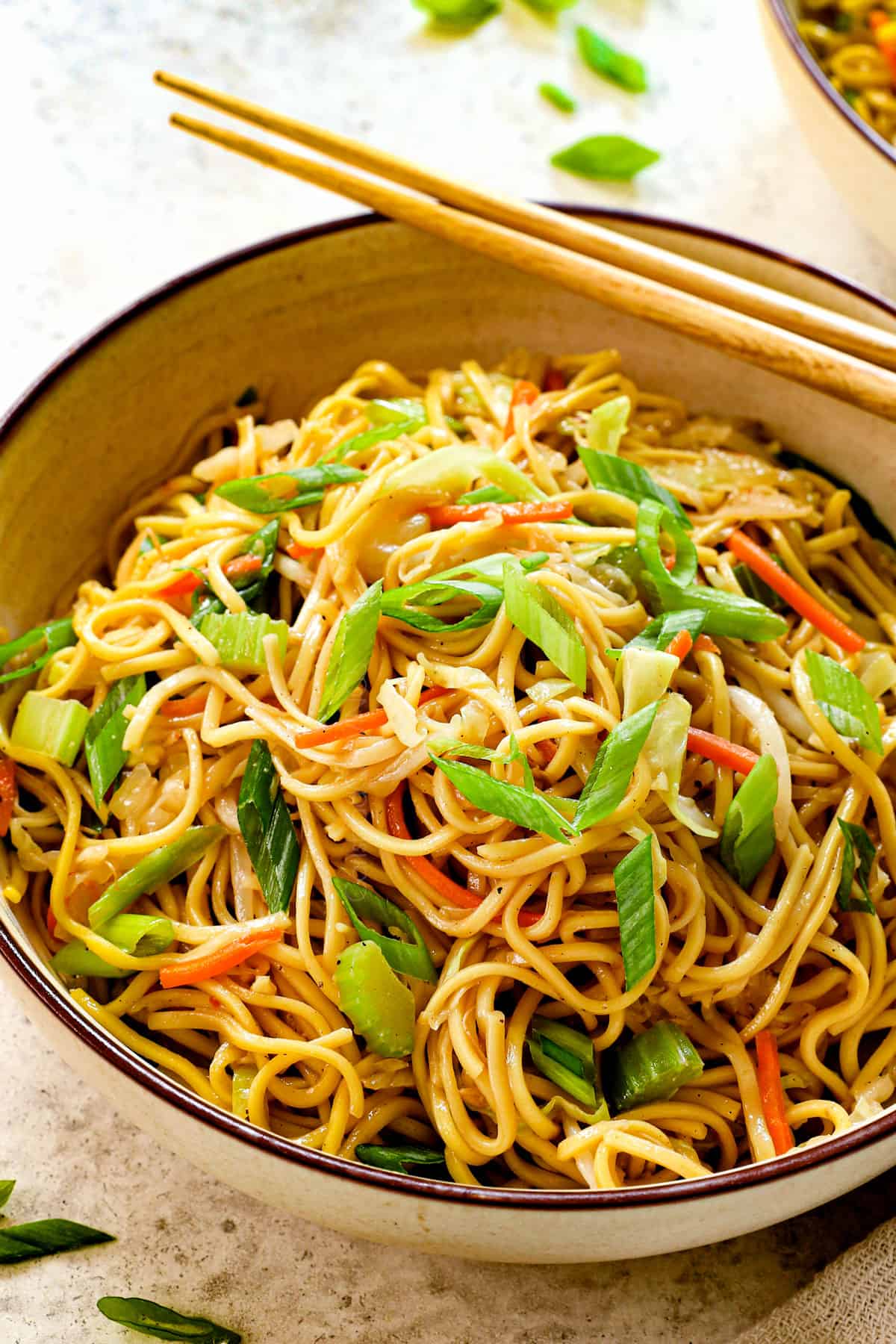

What to serve with Homemade Chow Mein
This homemade chow mein can be served as a main dish, or as side to your favorite Chinese inspired dishes:
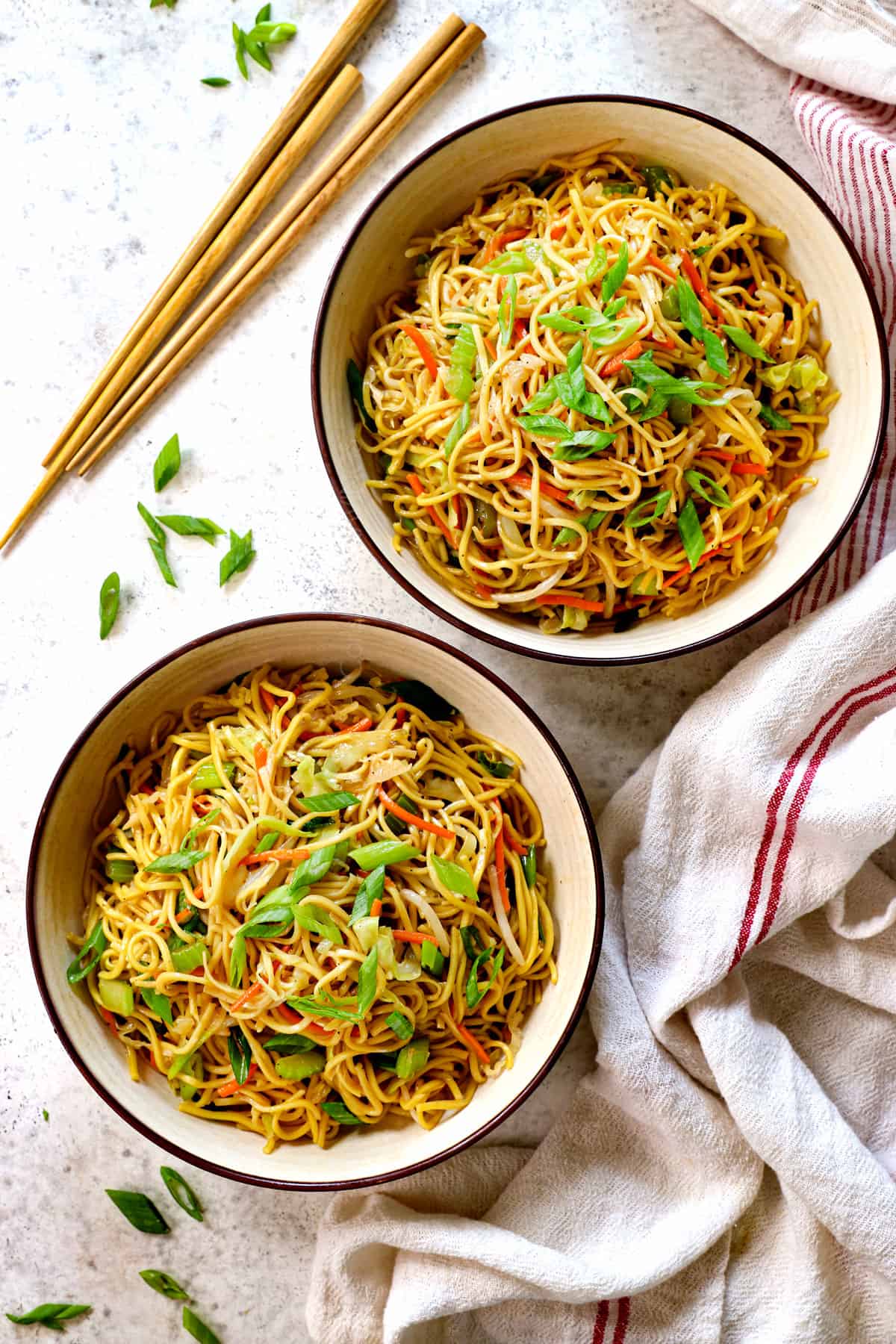

chow mein recipe MEal Prep
-Noodles: Cook the noodles, rinse and drain, then toss with a drizzle of toasted sesame oil. Store in an airtight container/plastic bag in the refrigerator for up to three days.
-Sauce: Whisk the sauce ingredients together and store in an airtight container in the refrigerator for up to 5 days.
-Veggies and aromatics: Chop and store in separate airtight containers in the refrigerator for up to 2 days.

How to store Homemade Chow Mein
Chow mein leftovers are still tasty and chewy! Store leftovers in an airtight container in the refrigerator for up to 5 days.

How To reheat easy chow mein recipe
-Microwave: Transfer servings to a microwave-safe plate and cook for one minute, stir, then continue to heat at 15 second intervals until warmed through.
-Stove: Reheat noodles gently over medium-low heat in a large skillet until warmed through, adding a splash of water or oil as needed.
Freezing Chow Mein Noodles
Chow mein should not be frozen because egg noodles do not freeze well once combined with the sauce and will become an unpleasant texture when thawed.
Chow Mein FAQs
The term “chow mein” comes from the Mandarin Chinese words “chao mian” (炒面), which literally translate to “stir-fried noodles.” The name accurately describes the dish’s preparation method, as chow mein consists of stir-fried noodles along with various vegetables, meats, and sauces. The name has been adopted and popularized in Western countries, particularly in Chinese-American cuisine, where it refers to a specific style of dish featuring crispy or stir-fried noodles.
Chow mein is sweet, savory, aromatic and umami rich thanks to the light yet dynamic sauce made of soy sauce, oyster sauce, rice wine, toasted sesame oil, five spice and black pepper. The chow mein noodles are delightfully chewy, laced with crunchy cabbage, celery, carrots and bean sprouts.
Panda Express serves chow mein, not lo mein. Panda’s chow mein starts with fried noodles that are stir-fried and coated lightly in oil and sauce. Lo mein, on the other hand, is another type of Chinese noodle dish where the noodles are typically boiled and then mixed with a variety of ingredients including vegetables, meat, and sauce.
Chow mein noodles don’t tend to get as sticky as Italian pasta, however, a quick rinse will stop them from continuing to cook and drizzling with a little toasted sesame oil will infuse them with flavor and keep them loose and pliable.
Chow mein can be either wet (soft chow mein) or dry (crispy chow mein), depending on the preparation:
-Crispy Chow Mein: This version features crispy noodles that are often deep-fried or pan-fried until they are crunchy. The toppings and sauce are placed on top of the crispy noodles, and the noodles retain their crunchiness. This style of chow mein is often referred to as “crispy chow mein.”
-Soft Chow Mein: In this style, the noodles are typically cooked first in boiling water, then stir-fried with the sauce and vegetables, creating a softer, chewy texture, like in this recipe.
Both types of noodles are made from wheat flour, so they have a similar flavor, but they vary in texture. Chow mein noodles tend to have a chewier and sometimes slightly crispy texture because they are cooked in boiling water, then deep fried before packaging. Ramen noodles, on the other hand, are boiled and treated with a salty, alkaline liquid that gives the noodles their signature softer, slippery, chewy, springy texture.
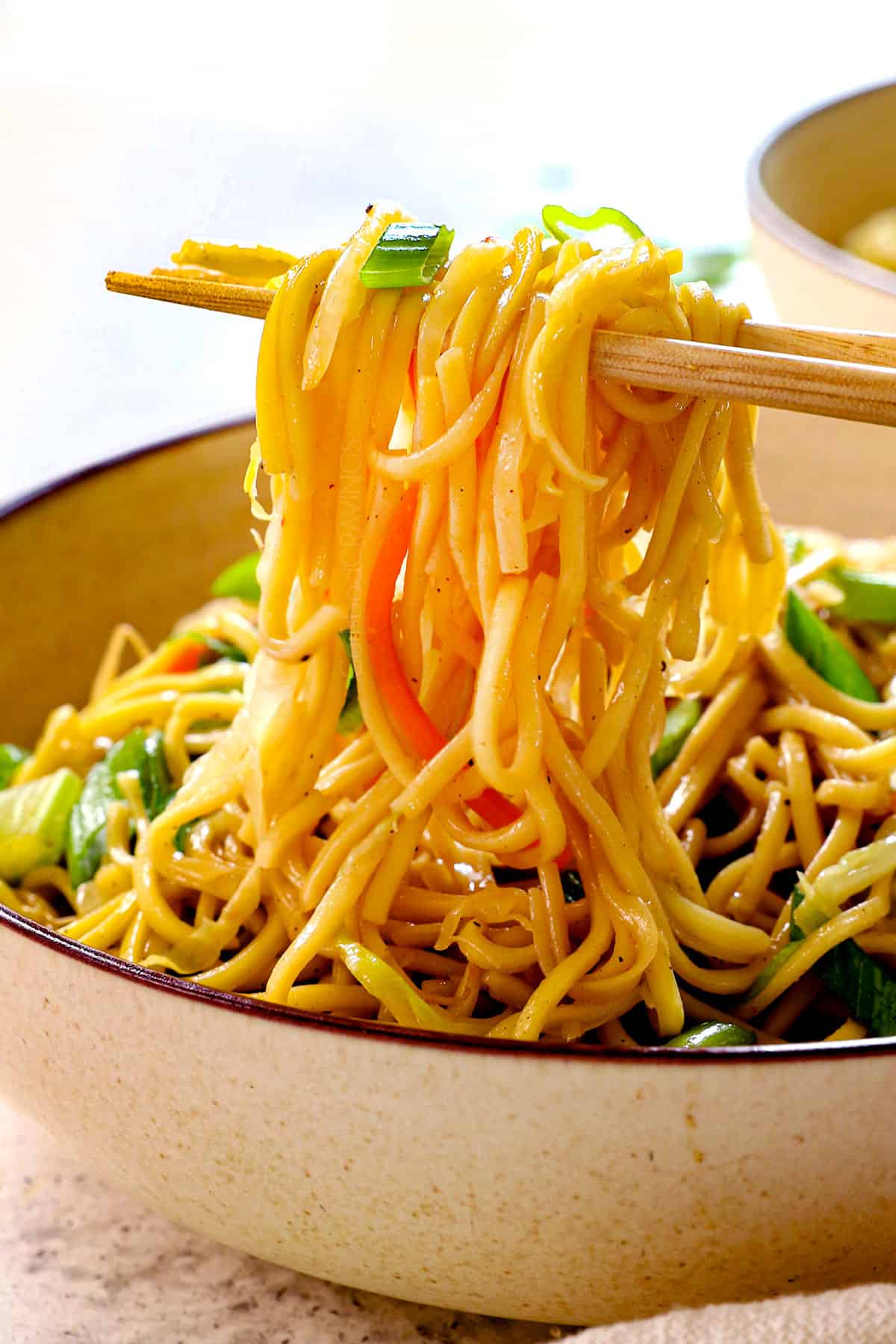

Looking for more Asian Noodle Recipes?
Dan Dan Noodles
Singapore Noodles
Sesame Noodles
Korean Noodles
Chicken Pad Thai
Chicken Yakisoba
Peanut Noodles
Drunken Noodles
Pad See Ew
WANT TO TRY THIS chow mein RECIPE?
PIN IT to your recipe BOARD TO SAVE FOR LATER!
FIND ME ON PINTEREST FOR MORE GREAT RECIPES! I AM ALWAYS PINNING :)!
©Carlsbad Cravings by CarlsbadCravings.com
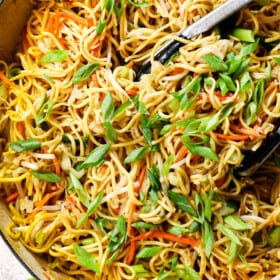
Chow Mein Noodles Recipe
Save This Recipe To Your Recipe Box
You can now create an account on our site and save your favorite recipes all in one place!
Ingredients
- 12 ounces chow mein noodles
- 1 1/2 tbsp peanut oil (or other neutral cooking oil)
- 2 ribs celery, chopped
- 3 green onions white parts chopped into 1-inch pieces, green parts chopped 1/4-inch*
- 2 cloves garlic, finely chopped (don’t mince or mash)
- 2 teaspoons freshly grated ginger
- 4 cups finely shredded green cabbage (I use my mandoline)
- 2 carrots, cut into matchsticks
- 1 1/2 cups bean sprouts
CHOW MEIN SAUCE:
- 1/4 cup low sodium chicken broth
- 3 tablespoons reduced sodium soy sauce
- 2 tablespoons oyster sauce
- 1 1/2 tbsp mirin/rice wine
- 1 tablespoon light brown sugar
- 1 tablespoon cornstarch
- 2 teaspoons toasted sesame oil
- 1-2 teaspoons Asian chili sauce (like sambal oelek or sriracha)
- 1/4 tsp EACH five spice powder, pepper
Instructions
- Sauce: Mix the sauce ingredients together; set aside.
- Prepare noodles: Cook noodles according to package instructions then drain, and toss with 1 teaspoon toasted sesame oil; set aside.
- Sauté aromatics: Heat oil in a braiser, large fry pan or wok over medium-high heat. Add the celery and WHITE parts of the green onions and sauté for 1 minute. Add the garlic and ginger and stir fry for 10-15 seconds.
- Stir fry vegetables: Add the cabbage and carrots and stir fry for 1-2 minutes, until the cabbage is mostly wilted.
- Add noodles: Add the noodles and sauce and stir fry for one minute by tossing the noodles with tongs.
- Add sprouts: Add the bean sprouts and the chopped tops of the green onions and toss to combine.
- Serve: Remove from heat and transfer to bowls. Garnish with additional green onions and sesame seeds if desired. Serve immediately.
Video
Notes
- Chow mein: Look for dried chow mein noodles in the Asian aisle of your grocery store or I purchase my noodles on Amazon (these are the ones I use). Each package typically is 6 ounces, you will use 12 ounces for this recipe.
- Shortcut cabbage: Use a mandoline slicer if you have one to cut thin, uniform cabbage in minutes.
- Green onions: 1 green onion is the entire bunch with all of the shoots on it.
- Rice wine: I use “Kikkoman Aji-Mirin: Sweet Cooking Rice Seasoning” which is commonly found in the Asian section of most grocery stores or you can Amazon it. The best substitute for rice wine is pale dry sherry. Do NOT substitute rice wine with rice vinegar, they are NOT the same. Rice vinegar will add an acidic bite without the sweetness.
- Storage: Chow mein leftovers are still tasty and chewy! Store leftovers in an airtight container in the refrigerator for up to 5 days.
- To reheat: Reheat noodles gently over medium-low heat in a large skillet until warmed through, adding a splash of water or oil as needed or in the microwave until warmed through.

Did You Make This Recipe?
Tag @CarlsbadCravings and Use #CarlsbadCravngs
Leave a Review, I Always Love Hearing From You!
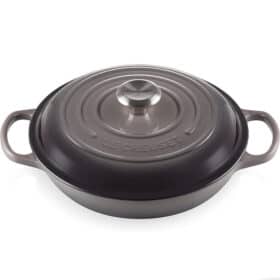

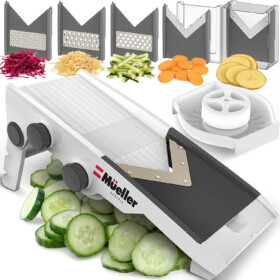

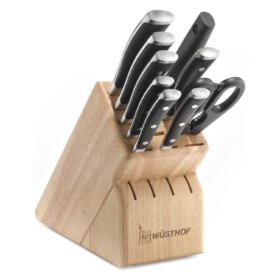
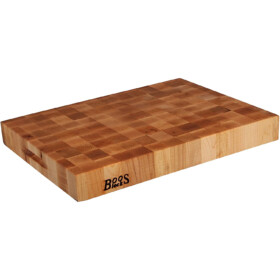
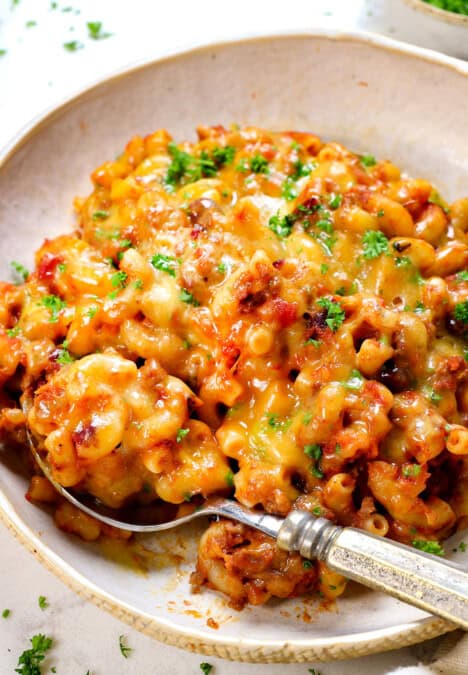
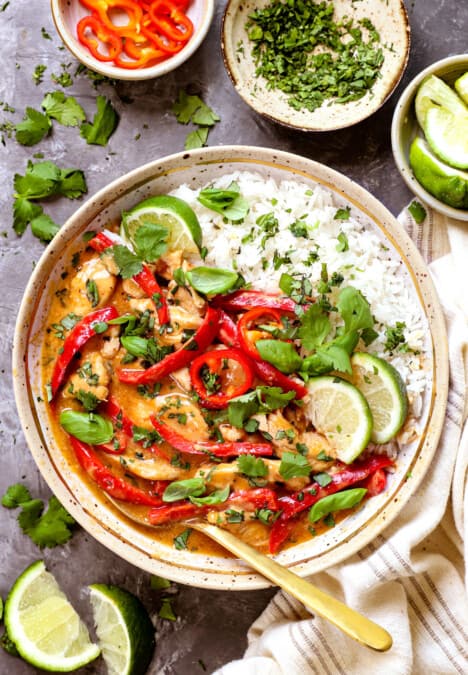

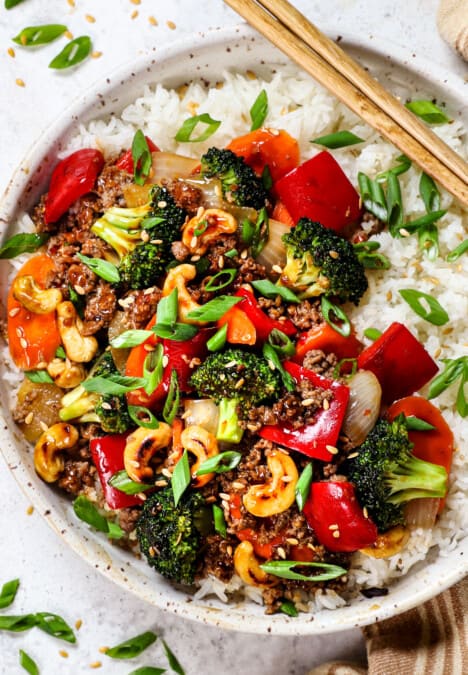

























Darice says
Hi Jen, I love your recipes and look forward to trying this Chow Mein Noodles recipe. Of course I will have to add some protein for my husband but he loves chicken breast that that is easy enough.
I am curious about when you state: Green onions: 1 green onion is the entire bunch with all of the shoots on it.
Jen says
Thanks for your kind words Darice! Many think one green onion is just one shoot/stalk, but it is all of the shoots that come from one root. Hope that helps!
Kathleen F says
The good ~ absolutely delicious. I will definitely make this recipe again. Nicely spiced with just a touch of heat.
The not so good ~ it took me longer than 15 minutes to prep all the ingredients. I thought there were way too many noodles. When I try this recipe again, I will use one package of the noodles. I added chicken to my recipe and forgot that I needed to cook it in advance. That slowed me down some. I’ll make sure to add a note for myself to add a bit more time for cooking the chicken. I did use a package of matchstick carrots. That saved me some time. I may also try a package of shredded cabbage.
Jen says
Thank you, Kathleen, I’m so glad you enjoyed this recipe! I’m delighted that it will be a repeat, and I hope you like it even better with your alterations!
Barbara Welty says
Amazing recipe! I added sautéed shrimp in the left overs and it was so good the second day? We will surely make this again!
Jen says
Adding shrimp is a tasty idea! I am so happy it was a hit!
Stacy says
This chow mein is so good! I’m glad to be introduced to toasted sesame oil, it adds so much. Served this with Asian caramel pulled pork and it was amazing!
Jen says
The oil really adds incredible flavor, I am so glad you agree! Thanks for your kind review! I am so glad you enjoyed it:)